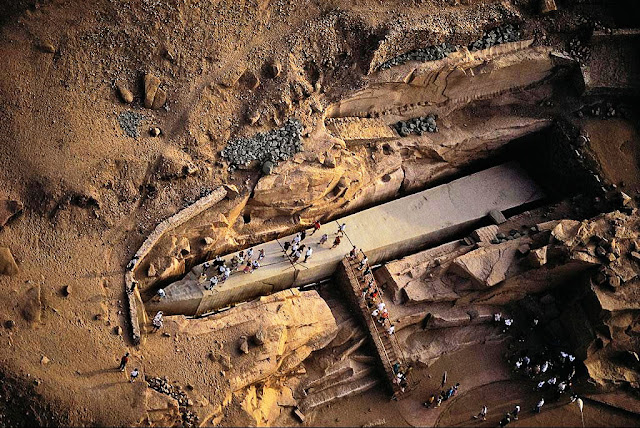To: Fred Nerks
That description is puzzling at best. :’) I’m more inclined to believe that the Baalbek megalithic stones were cut and set in place in pre-Conquest (and even prehistoric) times, then repurposed by the Danites, but I’m flexible in this regard. :’)
34 posted on
02/28/2015 2:35:34 PM PST by
SunkenCiv
(What do we want? REGIME CHANGE! When do we want it? NOW!)
To: SunkenCiv
The information found in ancient sources—that Shamir was a greenish mineral, that it was as large as a barley-corn; that it could damage anything, even metals and other minerals, save lead, and the only protection could be found by placing Shamir in a leaden box; that it had a “glance” which disintegrated things without leaving filings or dust; that it became inactive after a period of four hundred years—all reveal the true nature of Shamir.
http://www.varchive.org/ce/shamir/shamir.html
To: SunkenCiv
It’s wiki, here’s what Velikovsky had to say at your link:
http://www.varchive.org/ce/baalbek/baalbek.htm
It is even probable that the wall of the acropolis did not originate in one epoch. Among the stones of which it is built there are three of an unusual size—almost twenty meters long. Each of them weighs about one thousand tons. These huge monoliths are incased in the wall. The question arises whether they are not the survivals of the original cyclopean structure—that which carried the name Rehob, or Beth-Rehob, and which served as a landmark for the scouts dispatched by Moses in their survey of Canaan, and for the emissaries of the tribe of Dan in their search for the territory in the north. Like Stonehenge in Great Britain, or Tiahuanaco in the Andes, it may have originated in an early time—not necessarily neolithic, since it appears that these stones are subjected to hewing by metal tools.
In the quarry a mile away is found another stone of comparable size, cut out of the rock from all but one side; it appears that this stone of more perfect cut was quarried in a later time, possibly in the days of Jeroboam, or even later; but, for probably mechanical considerations, the work was not finished and the stone not removed, and the emulation of the early builders not completed.59
To: SunkenCiv

The unfinished obelisk is the largest known ancient obelisk and is located in the northern region of the stone quarries of ancient Egypt in Aswan (Assuan), Egypt. Archaeologists claim the pharaoh known as Hatshepsut sanctioned its construction. It is nearly one third larger than any ancient Egyptian obelisk ever erected. If finished it would have measured around 42 m long (approximately 137 feet), 2.5–4.4 m wide and would have weighed nearly 1,200 tons (1,066,621 kilograms).
Perhaps Hatshepsut and Solomon shared the same (ancient by then)technology?
To: SunkenCiv
FreeRepublic.com is powered by software copyright 2000-2008 John Robinson
